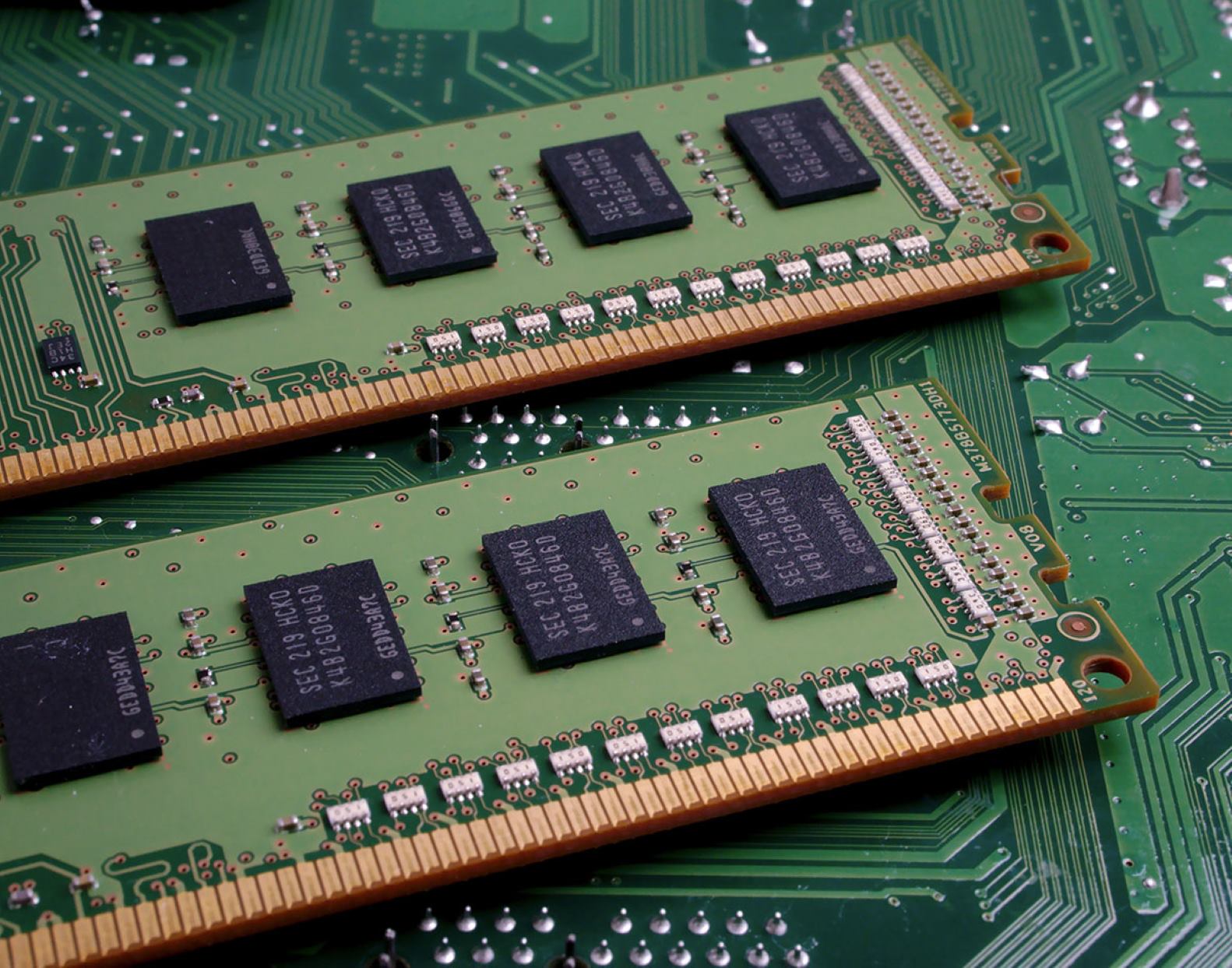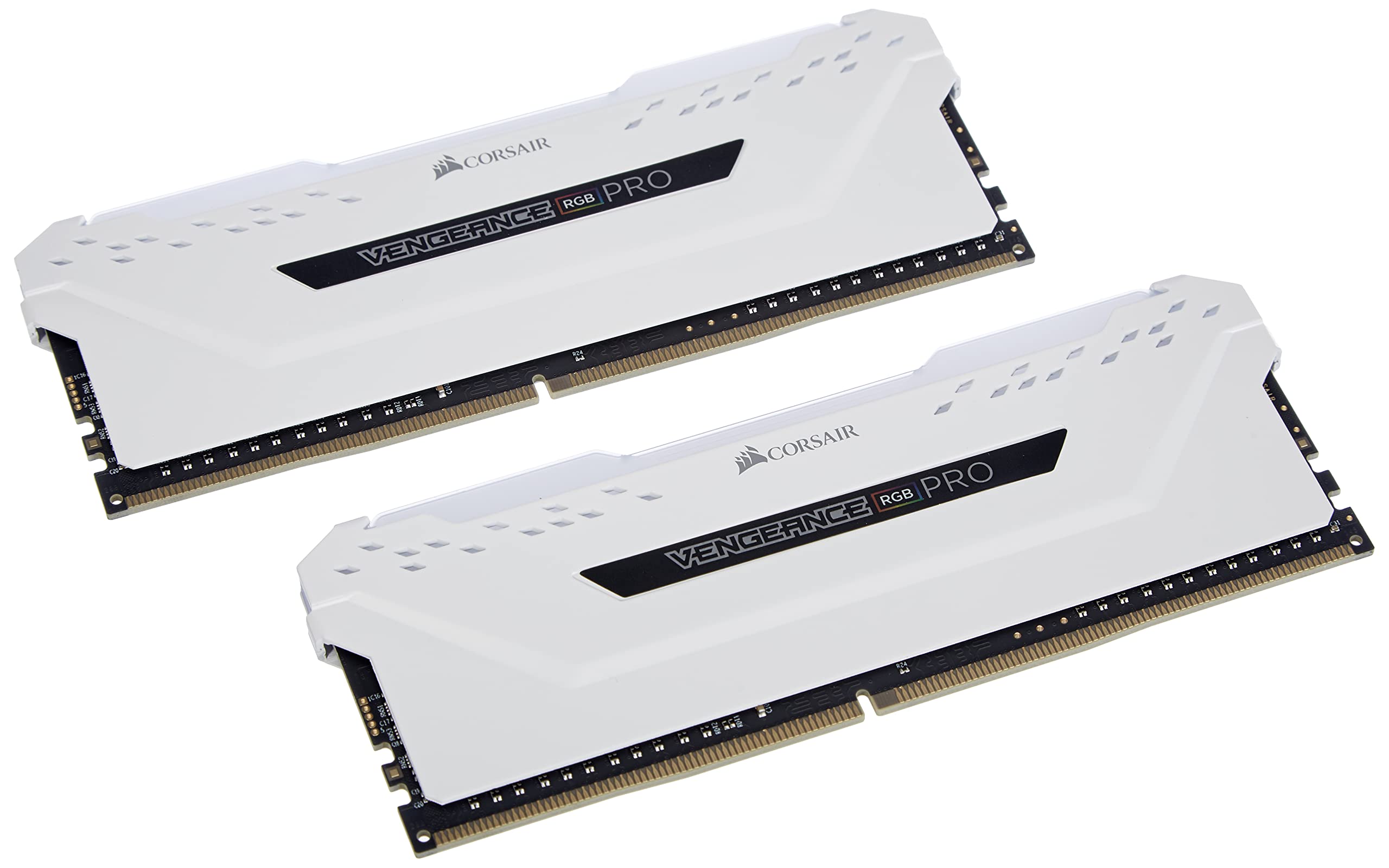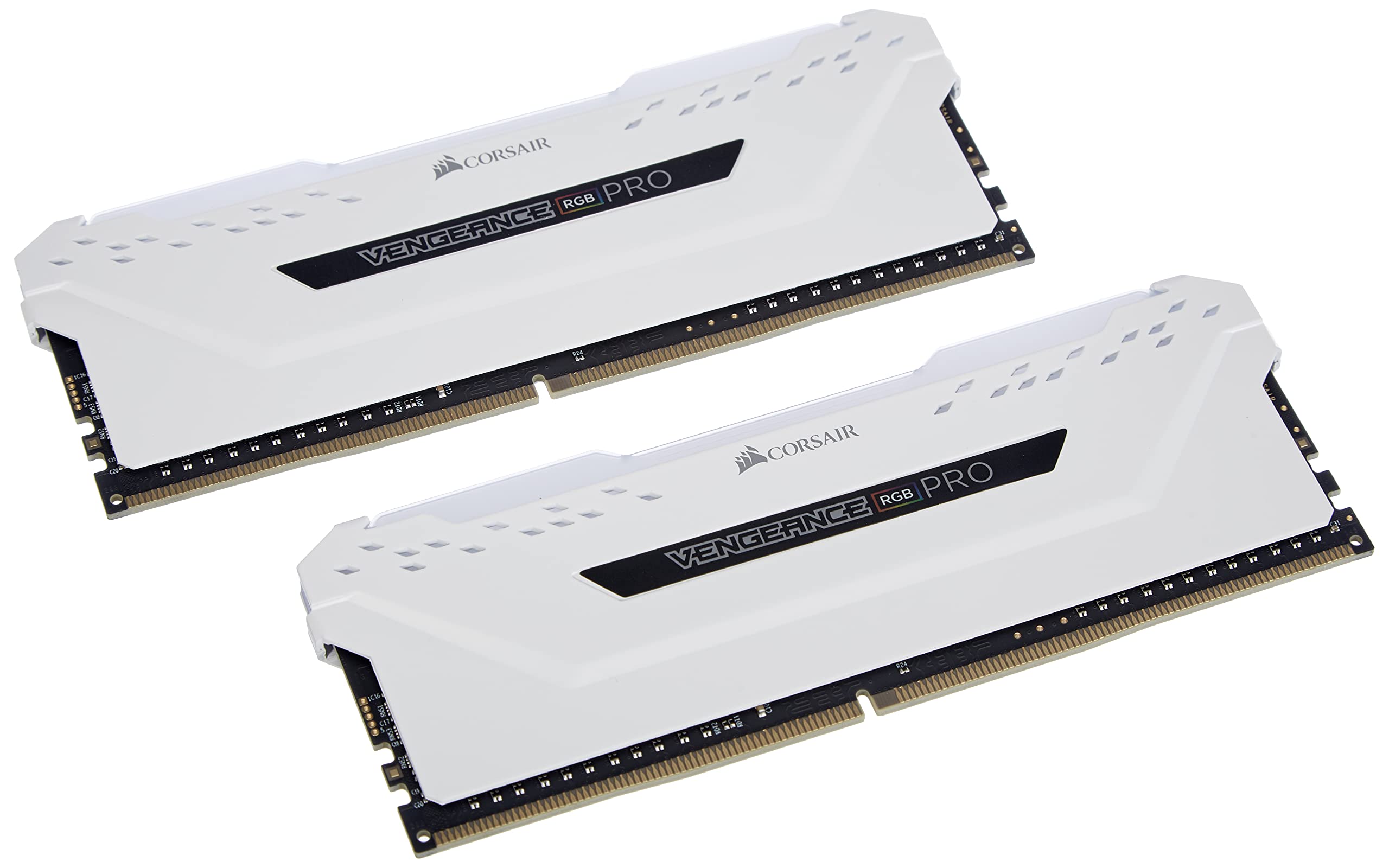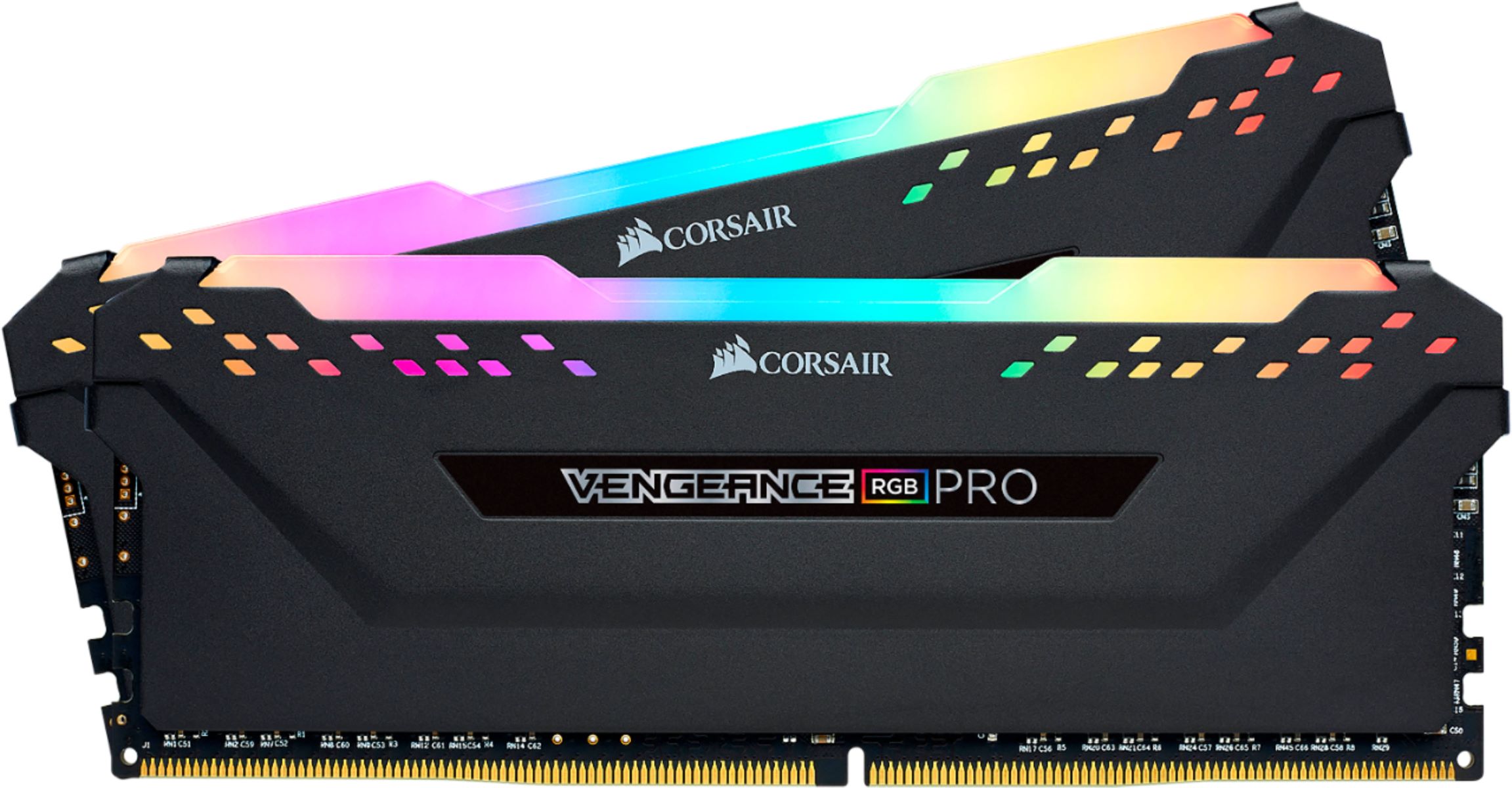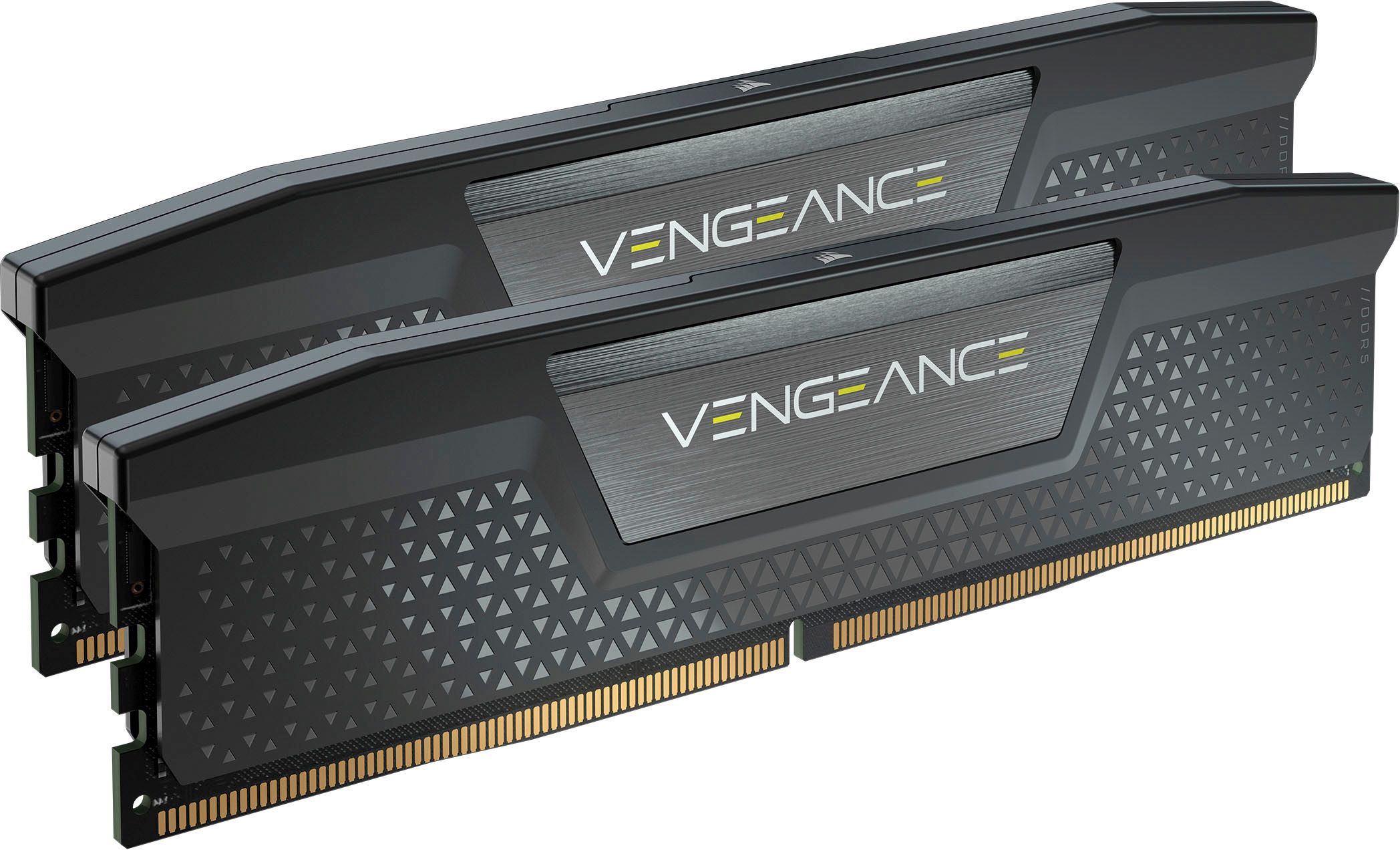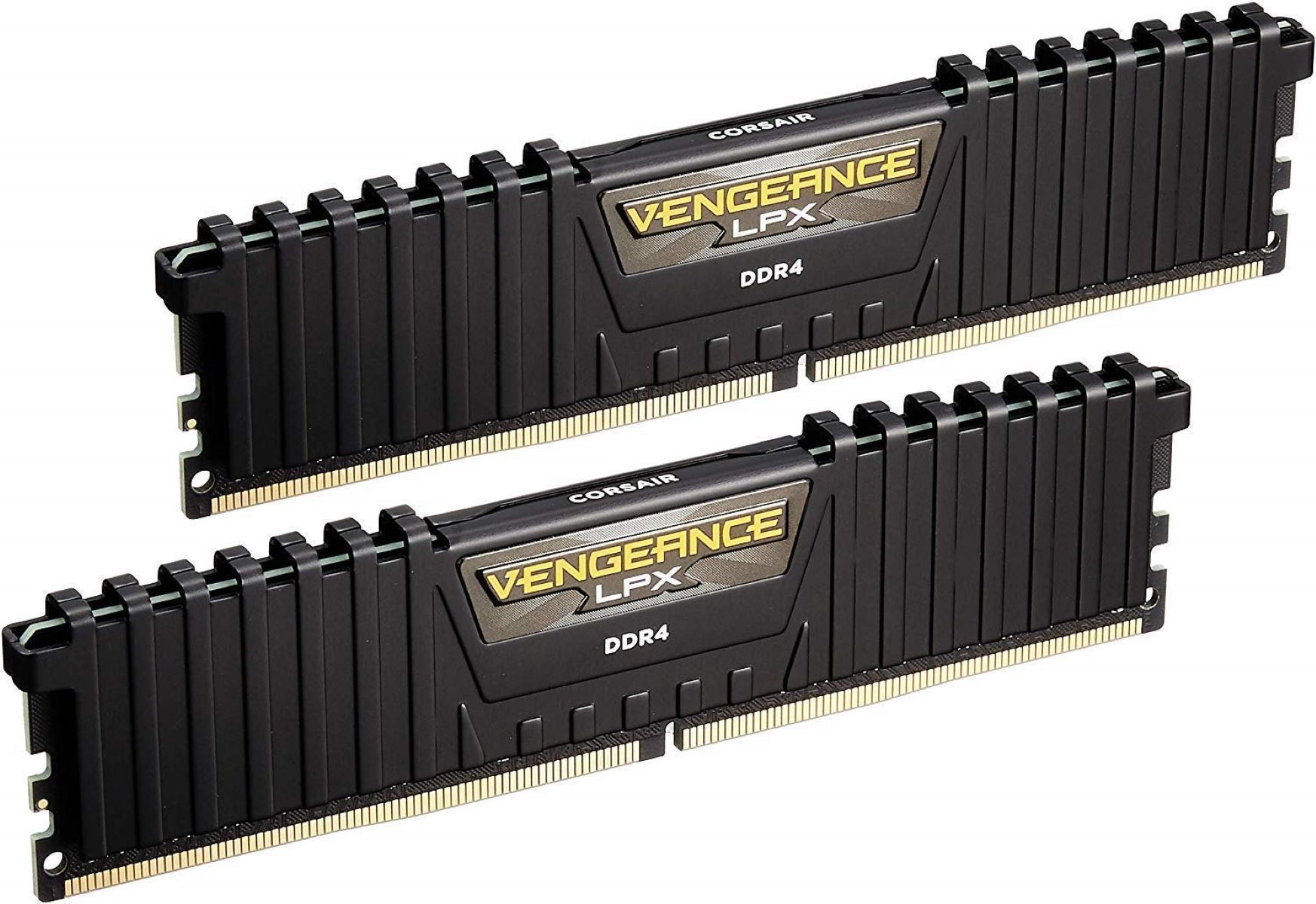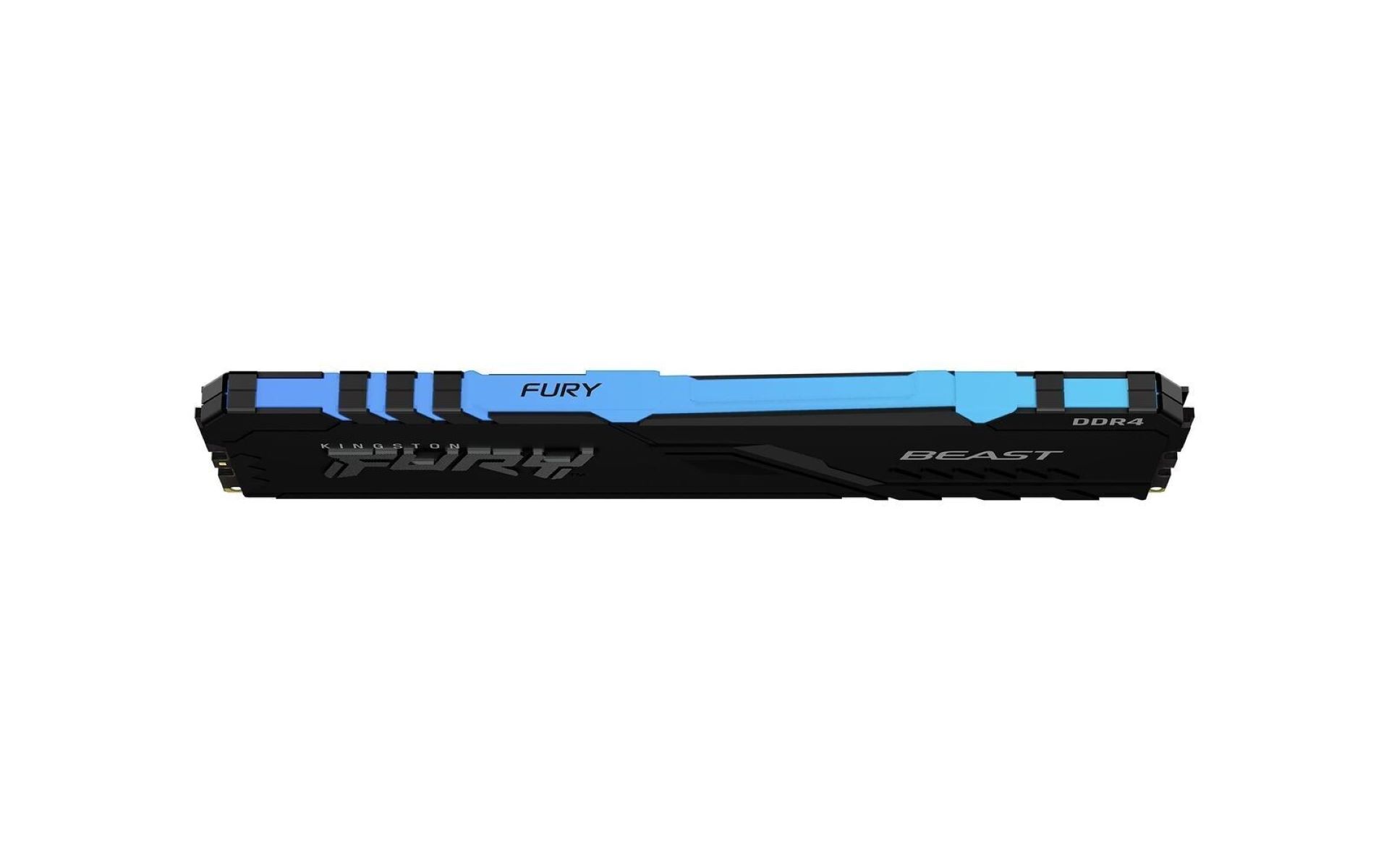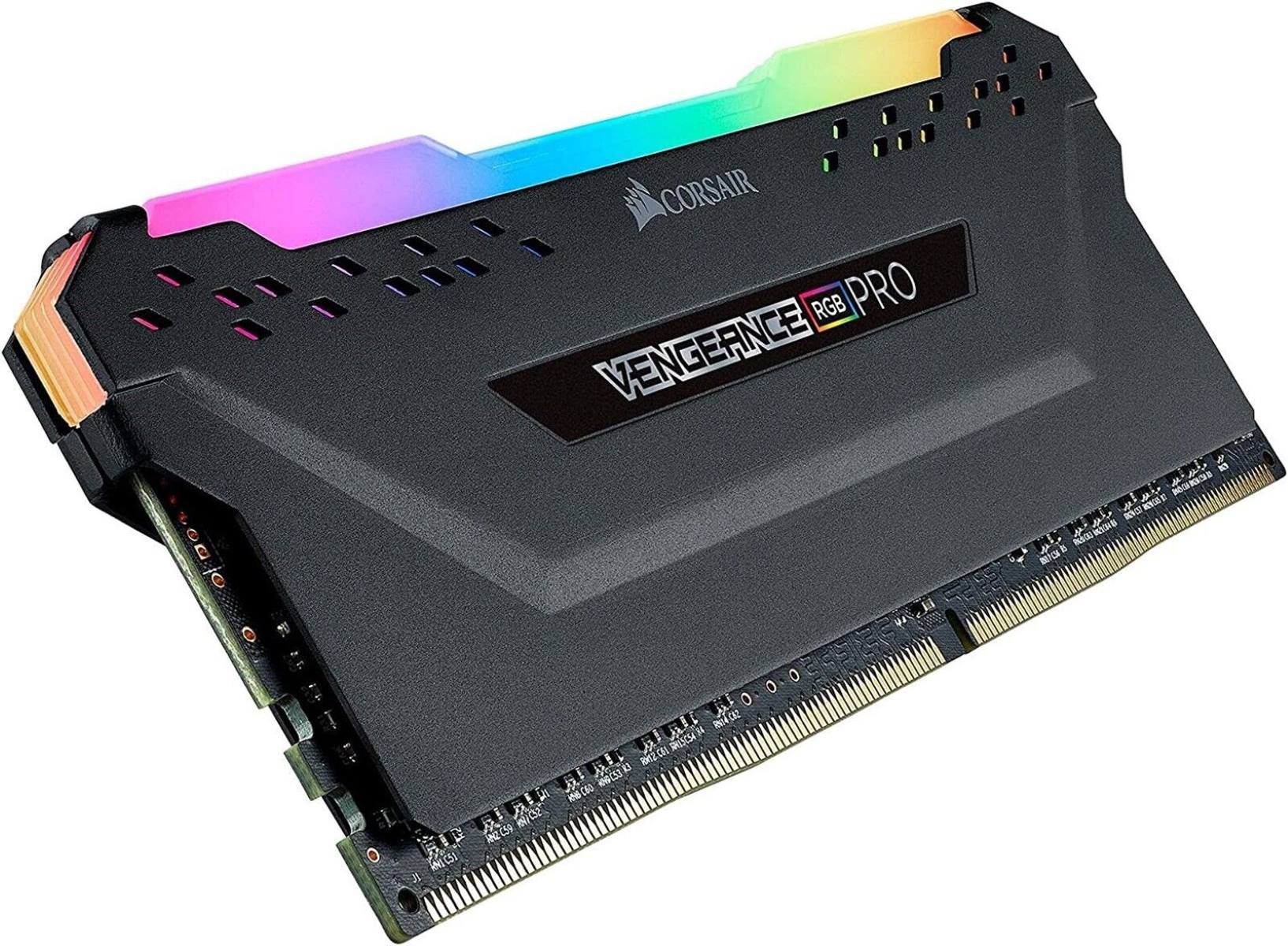Introduction
RAM, or Random Access Memory, is a vital component of any computer system. It plays a crucial role in determining the overall performance and speed of the system. When it comes to buying RAM, you may have come across various specifications and acronyms that can be confusing to understand. One such specification is C16. In this article, we will delve into what C16 means on RAM and its significance.
Before we dive into C16, let’s have a quick understanding of what RAM is and its function. RAM is a type of volatile memory that provides temporary storage for data that is actively being used by the computer’s operating system and applications. It allows for faster retrieval and processing of information compared to the long-term storage provided by hard drives or solid-state drives.
Now, let’s focus on C16. The designation C16 refers to the CAS latency of RAM. CAS (Column Address Strobe) latency represents the time delay between the memory controller requesting data from RAM and actually receiving that data. It is measured in clock cycles, with lower numbers indicating faster performance. In the case of C16, it means that the CAS latency is 16 clock cycles.
Understanding the significance of the CAS latency is essential to comprehend the impact of C16 on overall performance. A lower CAS latency means that the RAM module can retrieve data more quickly, leading to improved system responsiveness and smoother multitasking. On the other hand, a higher CAS latency may result in slightly slower performance and increased latency in data access.
While C16 may be a determining factor in RAM performance, it is important to note that it is not the sole factor to consider when choosing RAM for your system. Several other factors, such as data transfer rates, module type, and capacity, should also be taken into account to ensure optimal performance for your specific needs.
In the following sections, we will delve deeper into what exactly C16 indicates, how it is measured, its impact on performance, and whether it is crucial for gaming. We will also discuss the factors to consider when choosing RAM to help you make an informed decision for your computing requirements.
Understanding RAM
RAM, or Random Access Memory, is an integral part of any computer system. It serves as temporary storage for data that the computer’s operating system and applications need to access quickly. RAM allows for faster retrieval and processing of information compared to secondary storage devices like hard drives and solid-state drives.
Think of RAM as a workspace for the computer. When you open a program or file, it gets loaded into RAM, allowing the processor to access it quickly. Data stored in RAM can be read from and written to much faster than data stored on a hard drive, which significantly speeds up the overall performance of the system.
RAM is a volatile form of memory, meaning it requires a constant supply of power to retain the data stored within it. When you turn off your computer, the data stored in RAM is lost. This is why it is essential to save your work regularly and ensure you have a backup system in place.
One crucial aspect of RAM is its capacity, measured in gigabytes (GB) or terabytes (TB). The more RAM your computer has, the more data it can store and access quickly. This is especially beneficial when running memory-intensive applications or multitasking with several programs open simultaneously.
In addition to capacity, another factor to consider when choosing RAM is the speed at which data can be accessed or transferred. This is measured in megahertz (MHz) and represents the frequency at which the RAM operates. Higher MHz values indicate faster data transfer rates and improved performance.
Another vital specification to understand is the CAS latency, which is denoted by a number followed by the letter ‘C.’ CAS latency represents the number of clock cycles it takes for the RAM to respond to a command from the memory controller. Lower CAS latency values result in faster data access and better overall performance.
Understanding the role and specifications of RAM is essential for making informed decisions when upgrading or purchasing new memory modules for your computer system. In the next sections, we will focus specifically on the designation C16 and explore its significance in relation to RAM performance.
What is C16 on RAM?
When browsing through RAM specifications, you may have come across the term “C16.” But what exactly does it mean? In the context of RAM, C16 refers to the CAS latency of the memory module. CAS, which stands for Column Address Strobe, represents the time it takes for the RAM to respond to a command from the memory controller. It is measured in clock cycles.
The CAS latency is a crucial factor in determining the overall performance and speed of the RAM. It represents the time delay between the controller requesting data from the RAM and actually receiving it. Smaller CAS latency values indicate faster performance, as the RAM can retrieve data more quickly.
In the case of C16, the number “16” represents the CAS latency value. This means that it takes 16 clock cycles for the RAM to respond to a command and provide the requested data. The lower the CAS latency, the faster the RAM can access data, resulting in improved system responsiveness and smoother multitasking.
It’s essential to note that CAS latency values can vary among different RAM modules. Higher-end RAM kits often boast lower CAS latency values, such as C14 or even C12, indicating faster performance. However, these modules tend to be more expensive than those with higher CAS latency values.
While C16 signifies a decent level of performance, it might not be the best choice for every scenario. Factors such as budget, usage requirements, and compatibility with the motherboard and CPU should also be considered when selecting RAM for your specific needs.
While a lower CAS latency is generally desirable for faster performance, the real-world impact may differ based on the specific workload. Activities like gaming, video editing, and other processor-intensive tasks may benefit from lower CAS latency values, as these applications frequently require fast data access. However, for everyday computing tasks like web browsing, word processing, and email, the difference in CAS latency may not be as noticeable.
Overall, understanding the significance of C16 in relation to RAM performance allows you to make informed decisions when selecting the appropriate memory modules for your computer system. In the next section, we will explore how CAS latency, including C16, is measured and its impact on overall performance.
How is C16 Measured?
When it comes to measuring C16 or any other CAS latency value, it is important to understand the concept of clock cycles. Clock cycles represent the basic unit of time in a computer system and are used to measure the timing and synchronization of various operations.
CAS latency, denoted by the “C” and the number following it, is measured in clock cycles. It indicates the number of clock cycles it takes for the RAM to respond to a command and provide the requested data. In the case of C16, it means that it takes 16 clock cycles for the RAM to complete this process.
The specific method for measuring CAS latency may vary depending on the manufacturer and the RAM module. However, in general, it involves a series of tests and evaluations to determine the number of clock cycles it takes for the RAM to respond accurately.
Manufacturers use specialized equipment and software to analyze the RAM’s response time and calculate the CAS latency value. These tools analyze the speed and timing of data communication between the memory controller and the RAM module, allowing them to precisely determine the CAS latency.
It’s important to note that CAS latency values are standardized, allowing for easy comparison between different RAM modules. These values are typically specified by the manufacturer and can be found on the RAM module’s product documentation or label.
While CAS latency is a crucial performance metric, it is not the only factor to consider when evaluating RAM. Other specifications, such as data transfer rates, voltage requirements, and module capacity, also play a role in determining the overall performance and compatibility of the RAM module.
In summary, C16 is measured in clock cycles, and it indicates the number of cycles it takes for the RAM to respond to a command and provide data. The lower the CAS latency, the faster the RAM module can access data, resulting in improved system responsiveness. Understanding how CAS latency, including C16, is measured allows you to make informed decisions when selecting RAM for your computer system.
The Impact of C16 on Performance
The CAS latency, including C16, has a notable impact on the overall performance of RAM and, consequently, the system as a whole. The lower the CAS latency, the faster the RAM can access data, resulting in improved performance and responsiveness. However, the actual impact can vary depending on the specific workload and application.
In scenarios that require frequent and rapid data access, such as gaming or video editing, a lower CAS latency can lead to noticeable improvements. Lower latency means that the RAM can quickly respond to requests for data from the memory controller, resulting in smoother gameplay, faster rendering, and reduced lag.
Applications that involve heavy multitasking or running multiple resource-intensive programs simultaneously can also benefit from a lower CAS latency. With reduced latency, the RAM can efficiently handle multiple data requests, allowing for improved system responsiveness and smoother multitasking performance.
However, it’s important to note that the impact of CAS latency, including C16, may be less noticeable in everyday computing tasks, such as web browsing, word processing, and email. These activities generally require less demanding memory usage, and the difference in CAS latency may not have a significant impact on day-to-day performance.
Furthermore, the impact of CAS latency can be influenced by other factors, such as the CPU’s memory controller capabilities and the overall system configuration. It’s crucial to consider the compatibility and optimization of all components to achieve optimal performance.
While a lower CAS latency generally translates to better performance, it’s important to find a balance that suits your specific needs and budget. RAM modules with lower CAS latency values tend to be more expensive, and the benefit may not justify the additional cost for every user.
Ultimately, the impact of C16 or any other CAS latency value on performance depends on the specific tasks and applications you regularly engage in. Assessing your computing requirements, considering the workload, and factoring in the overall system configuration will help you make an informed decision on the ideal RAM module with the appropriate CAS latency for your needs.
Is C16 Important for Gaming?
When it comes to gaming, having a fast and responsive system is crucial for an enjoyable gaming experience. RAM, along with other components, plays a significant role in gaming performance. But is C16 important for gaming?
The answer lies in understanding the significance of CAS latency and its impact on gaming performance. CAS latency, including C16, represents the time it takes for the RAM to respond to commands and provide the requested data. A lower CAS latency generally indicates faster data access and improved system responsiveness.
In gaming, where the system needs to quickly load and process large amounts of data, having low CAS latency can lead to smoother gameplay, reduced lag, and faster level loading times. It allows for quicker retrieval of game assets, resulting in improved overall performance.
However, the impact of CAS latency, including C16, may vary depending on the specific game and the overall system configuration. Some games are more CPU-dependent, while others rely heavily on GPU performance. In CPU-bound scenarios, RAM with lower CAS latency can help reduce bottlenecks and improve frame rates. On the other hand, in GPU-bound situations, the impact of CAS latency may be less pronounced.
It’s important to note that while CAS latency is a significant factor for gaming performance, it is not the only one. Other factors such as the graphics card, CPU, storage, and overall system optimization also play a crucial role. Ensuring a balanced system with well-matched components is essential for optimal gaming performance.
Additionally, it is worth considering that the difference in gaming performance between various CAS latency values may not always be noticeable, especially in mainstream games or at lower resolutions. The impact of CAS latency becomes more significant in high-resolution gaming, virtual reality, or when running demanding games with complex physics simulations and AI calculations.
Overall, while low CAS latency, including C16, can have a positive impact on gaming performance, it is essential to consider the overall system configuration, budget, and specific gaming requirements. Evaluating factors such as the CPU, GPU, and system optimization alongside CAS latency will guide you in making an informed decision when choosing RAM for gaming purposes.
Factors to Consider When Choosing RAM
When selecting RAM for your computer system, it’s important to consider several factors beyond just the CAS latency, including C16. These factors will help ensure compatibility, optimal performance, and value for your specific needs. Here are some key considerations to keep in mind:
- Capacity: Determine the amount of RAM required for your computing needs. Consider the types of applications you use, whether you engage in memory-intensive tasks like gaming or video editing, and the recommended requirements of your operating system and software.
- Type of RAM: There are different types of RAM available, such as DDR4, DDR3, and DDR2. Ensure compatibility with your motherboard by selecting the appropriate RAM type supported by your system.
- Data Transfer Rates: Look for RAM modules with higher data transfer rates, measured in megahertz (MHz). Higher transfer rates result in faster communication between the RAM and other system components, leading to improved performance.
- Voltage: Check the RAM’s voltage requirements and ensure compatibility with your motherboard. Choosing RAM with low-voltage options can help reduce power consumption and heat generation.
- Timing: In addition to CAS latency (C16 or other values), consider other timing parameters like tRCD (RAS to CAS Delay) and tRP (RAS Precharge Delay). These timings impact how fast the RAM can respond to specific commands and fetch data.
- Overclocking Capabilities: If you plan to overclock your system for increased performance, consider RAM modules designed for overclocking. These modules often have higher frequencies and lower latency settings to handle increased speeds.
- Compatibility: Ensure compatibility with your motherboard, CPU, and other components. Check the motherboard’s specifications and supported RAM configurations to avoid any compatibility issues.
- Budget: Consider your budget and the value offered by different RAM options. Higher-end RAM modules with lower CAS latency values may offer improved performance but come at a higher cost. Assess your needs and find the right balance between performance and affordability.
By considering these factors, you can make an informed decision when choosing RAM for your system. It’s important to strike a balance between the specifications that meet your requirements, compatibility with your system, and the budget you have allocated for RAM.
Remember, the CAS latency, including C16, while important, is just one piece of the puzzle. By considering all relevant factors, you can ensure that you select the right RAM configuration that will provide optimal performance for your computer system.
Conclusion
Choosing the right RAM for your computer system is crucial for achieving optimal performance and responsiveness. Understanding the significance of CAS latency, including C16, is an important aspect of making informed decisions when selecting RAM modules.
We have explored what C16 means on RAM, with CAS latency being the time delay between the memory controller requesting data from the RAM and actually receiving it. Lower CAS latency values indicate faster performance and improved system responsiveness.
While C16 can have a noticeable impact on overall performance, it is important to consider other factors as well. Capacity, type of RAM, data transfer rates, voltage requirements, timing, overclocking capabilities, compatibility, and budget are all factors that should be taken into account when choosing RAM.
For gaming, lower CAS latency, including C16, can contribute to smoother gameplay and reduced lag, particularly in CPU-bound scenarios. However, the impact may vary depending on the specific game and system configuration.
Ultimately, the right RAM choice depends on your specific needs and budget. Carefully evaluate your computing requirements, the type of applications you use, and the overall system configuration to find the optimal balance between performance, compatibility, and cost.
By considering all relevant factors and understanding the importance of CAS latency, including C16, you can make an informed decision when selecting RAM. This will ensure that your computer system delivers the best possible performance and responsiveness for your computing needs.









